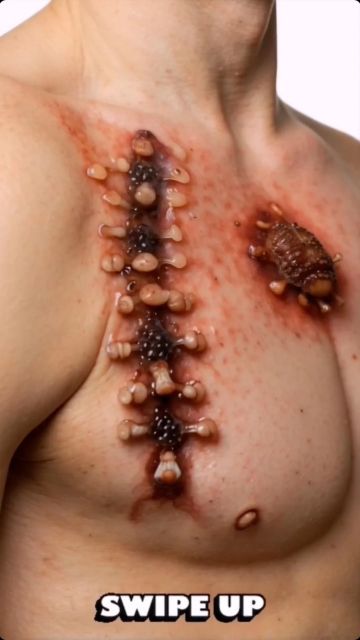What is Myiasis?
Myiasis is a parasitic infection caused by the infestation of fly larvae, commonly known as maggots. Notable fly species responsible for myiasis include Dermatobia hominis and Cordylobia anthropophaga. The most prevalent form of this condition is cutaneous myiasis, which includes several subtypes such as furuncular, wound, and migratory (or creeping) myiasis. Other types include nasopharyngeal myiasis, affecting the nose, sinuses, and pharynx, and ophthalmomyiasis, which impacts the eyes. Rare forms include intestinal myiasis, involving the gastrointestinal tract, and urogenital myiasis, affecting the urogenital system. Myiasis is relatively uncommon in the United States and is typically found in tropical and subtropical regions, including Mexico, South America, Central America, sub-Saharan Africa, and the Caribbean islands.
What Causes Myiasis?
Myiasis occurs when Diptera flies lay their eggs in humans. Flies that frequently cause myiasis, especially furuncular myiasis, include Dermatobia hominis and Cordylobia anthropophaga. Less commonly involved flies include Cochliomyia hominivorax and Chrysomya bezziana, which mainly cause wound myiasis; Hypoderma bovis and Gasterophilus intestinalis, which mainly cause migratory myiasis; and Oestrus ovis, which generally causes ophthalmomyiasis.
Myiasis is not transmitted from person to person. However, fly larvae can be transmitted to humans in several ways. Flies may deposit their eggs near wounds or sores, allowing the hatched larvae to burrow into the skin. People are at a higher risk of myiasis when traveling to endemic areas with untreated injuries or open wounds. Alternatively, Diptera flies can attach their eggs to mosquitoes or ticks. When these insects bite a person, the eggs can enter the skin through the bite. Flies can also lay their eggs on the ground or on objects that come into contact with skin, such as damp clothing. Additionally, flies can infect animals, like horses and cattle, potentially infecting humans who come into close contact with these animals.
Signs and Symptoms of Myiasis
Symptoms of myiasis vary based on the type:
- Furuncular myiasis: Non-healing, boil-like lesions that may be purulent, painful, pruritic, and tender.
- Wound myiasis: Larvae in open wounds may cause systemic symptoms like fever and chills.
- Migratory myiasis: The larvae migrate, creating a tortuous, thread-like red line marking their passage through the skin.
- Nasopharyngeal myiasis: Symptoms include epistaxis (nosebleed), foul-smelling nasal discharge, nasal passage of worms, nasal obstruction, facial pain, headache, and dysphagia.
- Ophthalmomyiasis: Severe eye irritation, redness, foreign body sensation, pain, lacrimation, and eyelid edema.
- Intestinal myiasis: Abdominal pain, vomiting, and diarrhea.
- Urogenital myiasis: Dysuria and hematuria.
Diagnosis of Myiasis
Diagnosis involves a detailed travel history and thorough physical examination. A complete blood count (CBC) may show leukocytosis, specifically eosinophilia. Imaging tests, such as ultrasound, MRI, or CT scans, may be used to determine the size and location of the larvae. Biopsies are rarely performed but may reveal inflammatory infiltrates.
Treatment of Myiasis
Myiasis often resolves on its own as the larvae are sloughed off within weeks. In cutaneous myiasis, topical substances like petroleum jelly or liquid paraffin can aid in the extraction of larvae by encouraging them to emerge from the skin, where they can be removed with tweezers. Antiparasitic medications, such as ivermectin, are commonly used for all types of myiasis to kill the larvae. In severe cases, surgical removal of the larvae under topical anesthesia may be necessary. Post-surgery, antiseptic dressings and antibiotics may be used to prevent secondary infection. Maintaining proper hygiene of wounds is crucial in cases of wound myiasis.
Essential Facts about Myiasis
- Myiasis is a skin infestation by fly larvae, most commonly Dermatobia hominis and Cordylobia anthropophaga.
- The most common clinical type is cutaneous myiasis, including furuncular, wound, and migratory subtypes.
- Myiasis is most prevalent in tropical and subtropical regions of Africa and America.
- Transmission occurs through various means, such as deposition in an open wound.
- Diagnosis is based on history, physical examination, blood tests, imaging, and rarely biopsy.
- Treatment can include topical substances for larvae extraction, antiparasitic medications like ivermectin, and surgery in severe cases.
















Leave a Reply